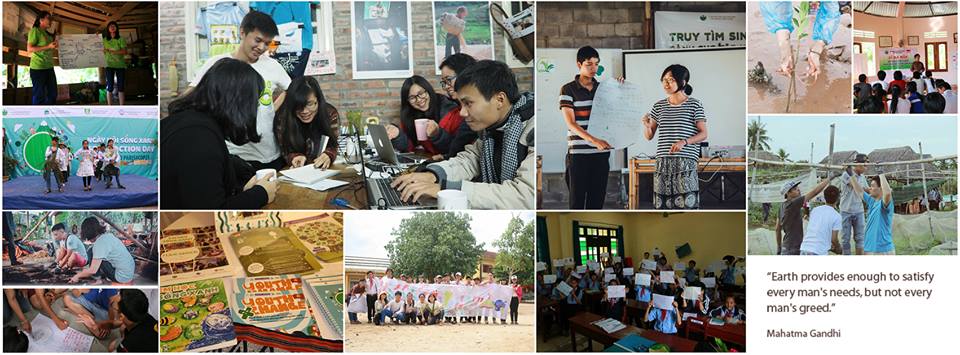ENHANCING ENVIRONMENTAL MANAGEMENT CAPACITY IN YEN TU HISTORICAL AND BEAUTY SITE
Under a joint organisation by Institute for Conservation of Monuments (ICM), Centre for Development of Community Initiative and Environment (C&E) and Center for Management of Yen Tu Historical and Beauty Site (Yen Tu), the training was implemented to raise environmental capacity and awareness of local heritage agencies.
.jpg)
The training provided and consolidated knowledge of heritage management and conservation of which environmental management was an integral part. It introduced participants to current central and local environmental legislations and knowledge of bio-environment and bio-diversity protection. It also raised trainees’ awareness of environment issues in heritage conservation such as impacts of climate change on heritages and assisted with action planning for this purpose. Participants analysed and assessed environmental impacts of heritage usage and other activities. They examined and recommended environmental mitigation measures such as integration of environmental protection and heritage conservation, waste treatment, and public participation to meet aims for economic, social, and cultural development, social equity, satisfying diverse demands of tourists and bio-environment protection.
The training attracted special attention and enthusiastic participation of HCI leaders, Department of Science, Technology and Environment- Ministry of Culture, Sport and Tourism, and People’s Committee of Uong Bi Town. Leading experts, including Prof. Hoang Hoe, former President of Vietnam Forestry Sciences and Technology Association, Prof. Dr. Vu Van Tuan, former Vice President of Institute of Meteorology, Hydrology and Environment and some lecturers from ICM and C&E were course trainers and facilitators. Trainees included officials and environmental staff of MU Yen Tu, Tung Lam Company, officials of Phuong Dong và Thuong Yen Cong Communes of Uong Bi Town in
.jpg)
The training core methodologies were learning-by-doing and student-centered. At the beginning, course facilitators analysed learning needs and experience of trainees. They designed training program with flexibility to meet real needs, maximise use of trainees’ experience and create an enthusiastic and facilitating learning environment. Trainees, therefore, easily understood, remembered and applied learnt knowledge and skills in planning their particular works. Trainers often started with discussion on existing problems and provided a system approach to basic knowledge with reference to the local conditions. This helped trainees to raise their care and review their real working experiences. Trainers then expanded the lessons with international experience and facilitated experience sharing between trainers and trainees. In this way, trainees actively and positively participated in the training by means of discussions and arguments to solve real issues, including the development of an action plan for their management work.
By the end of the training, trainees applied learnt knowledge and skills to develop an action plan to deal with unreasonable issues and resolve shortcomings of the legislation system and environmental policies in Yen Tu Historical and Beauty Site. Despite their busy work, trainees from various units enthusiastically and fully joined the training. They actively discussed issues relevant to their work through speeches, dialogues, and discussions among themselves and with trainers. The training raised awareness and capacity of trainees in application of legal documents in environmental protection as part of cultural heritage management and conservation. At the same time, the training raised the sense of responsibilities of state officials, business people and religious leaders in this heritage site who would actively integrate environmental protection into heritage conservation.
Training managerial staff to raise their capacity for environmental protection is essential. The needs to continue and expand this training for other heritage sites and for more participants, besides heritage management staff, such as monks and nuns and officials of related agencies are huge and urgent. Moreover, there is a need for coordination of activities, including trainings, workshops, and media campaigns in residential areas and local schools as well as for tourists to communicate and educate the public in environmental protection and heritage conservation. After one or two years of implementation, changes in terms of awareness, behaviour and capacity for environmental protection and heritage conservation should be evaluated for further actions. All these activities, in turn, require cooperation and support from heritage management units and relevant agencies for project design and implementation as well as resource mobilisation.
![]()

Outline of Yen Tu Historical and Beauty Site
Spreading 20km in length, Yen Tu Historical and Beauty Site is located within two communes of Phuong Dong and Thuong Yen Cong of Uong Bi Town,
Compiled by: Bui Thi Thanh Thuy- C&E and Huynh Phuong Lan- ICM
